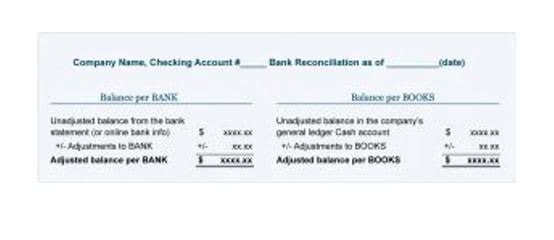
However, to gain a comprehensive view of a company’s overall performance, it is essential to consider other ratios as well, each of which evaluates various aspects of the business. Sometimes investors also want to see how companies use more specific assets like fixed assets and current assets. The fixed asset turnover ratio and the working capital ratio are turnover ratios similar to the asset https://www.bookstime.com/articles/what-is-book-balance turnover ratio that are often used to calculate the efficiency of these asset classes.
- One variation on this metric considers only a company’s fixed assets (the FAT ratio) instead of total assets.
- As with other business metrics, the asset turnover ratio is most effective when used to compare different companies in the same industry.
- This standard ensures consistency and clarity in the reporting of property, plant, and equipment in Saudi Arabia.
- The fixed asset turnover ratio (FAT ratio) is used by analysts to measure operating performance.
- One of the most commonly compared metrics with the Asset Turnover Ratio is the Return on Assets (ROA).
- Investors should review the trend in the asset turnover ratio over time to determine whether asset usage is improving or deteriorating.
How to calculate asset turnover ratio and what is its importance?
- While both ratios measure asset efficiency, ROA includes profitability (net income), whereas the asset turnover ratio focuses solely on revenue generation.
- The asset turnover ratio is an efficiency ratio that measures a company’s ability to generate sales from its assets by comparing net sales with average total assets.
- The Asset Turnover Ratio gives a broad view of how efficiently a company utilizes all its assets.
- Average total assets are usually calculated by adding the beginning and ending total asset balances together and dividing by two.
- This is crucial for transparent financial reporting and compliance with standards like IFRS or SOCPA.
- A company’s asset turnover ratio in any single year may differ substantially from previous or subsequent years.
These companies have large asset bases, so it is expected that they will slowly turn over their assets through how is sales tax calculated sales. In summary, while both ratios provide insights into how well a company uses its assets, ROA offers a more complete picture by factoring in profitability. Combining these two ratios can help investors assess both operational efficiency and the profitability of a business. With an asset turnover ratio of 0.30, AT&T generates only $0.30 in sales for every dollar of assets. This low ratio is typical for capital-intensive industries like telecommunications, where substantial investments in infrastructure are necessary. Average total assets are usually calculated by adding the beginning and ending total asset balances together and dividing by two.

Amazon.com Inc. (E-commerce Sector)
A more in-depth, weighted average calculation can be used, but it is not necessary. Sometimes, investors and analysts are more interested in measuring how quickly a company turns its fixed assets or current assets into sales. For example, retailers often have fewer assets using the information shown here, which of the following is the asset turnover ratio? relative to sales, leading to higher ratios, while manufacturers have more fixed assets, resulting in lower ratios. Thus, while the Asset Turnover Ratio measures operational efficiency, the Debt-to-Equity Ratio evaluates financial risk. Investors often look at both to assess a company’s ability to manage its operations and its finances.
Understanding the Asset Turnover Ratio: Meaning and Formula
Sally is currently looking for new investors and has a meeting with an angel investor. The investor wants to know how well Sally uses her assets to produce sales, so he asks for her financial statements. Net sales, found on the income statement, are used to calculate this ratio returns and refunds must be backed out of total sales to measure the truly measure the firm’s assets’ ability to generate sales.

The asset turnover ratio measures the efficiency of a company’s assets in generating revenue or sales. It compares the dollar amount of sales to its total assets as an annualized percentage. Thus, to calculate the asset turnover ratio, divide net sales or revenue by the average total assets.

What is « Asset Measurement » in accounting?
- This low ratio is typical for capital-intensive industries like telecommunications, where substantial investments in infrastructure are necessary.
- Combining these two ratios can help investors assess both operational efficiency and the profitability of a business.
- AT&T and Verizon have asset turnover ratios of less than one, which is typical for firms in the telecommunications-utilities sector.
- In other words, the company is generating 1 dollar of sales for every dollar invested in assets.
- For instance, a ratio of 1 means that the net sales of a company equals the average total assets for the year.
The total asset turnover ratio calculates net sales as a percentage of assets to show how many sales are generated from each dollar of company assets. For instance, a ratio of .5 means that each dollar of assets generates 50 cents of sales. In these cases, the analyst can use specific ratios, such as the fixed-asset turnover ratio or the working capital ratio, to calculate the efficiency of these asset classes.
- The asset turnover ratio considers the average total assets in the denominator, while the fixed asset turnover ratio looks at only fixed assets.
- Understanding the Asset Turnover Ratio is easier when we walk through the calculation process.
- A higher ratio indicates that the company is using its assets efficiently, while a lower ratio suggests underutilization of assets.
- The investor wants to know how well Sally uses her assets to produce sales, so he asks for her financial statements.
- In short, while the Asset Turnover Ratio gives a broad perspective on asset efficiency, the Inventory Turnover Ratio delves deeper into how effectively a company manages its stock.
An Asset Turnover Ratio of 1.33 means that for every 1 riyal invested in assets, the company generated 1.33 riyals in sales during the year. Another crucial comparison is between the Asset Turnover Ratio and the Inventory Turnover Ratio. Both ratios evaluate different aspects of a company’s efficiency, but they focus on distinct elements. This indicates a relatively efficient use of assets, especially when compared to industry benchmarks. Total sales or revenue is found on the company’s income statement and is the numerator.